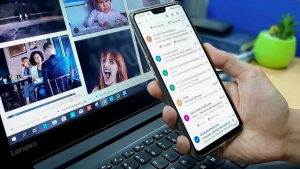Users form an opinion on a website in less than a second! According to a study that tracked eye movements of Internet users, it takes 2.6 seconds for them to notice the most prominent part of a website, the brand logo. Some of the factors that played a part in whether users had a positive or negative impression included visual components, such as text legibility, color, and image selection.
Logo
As stated before, visitors need a fraction of a second to form an opinion of your website. However, they have to view your logo at least 5 times before they recognize it. Therefore, your organization’s logo should be easy to recognize. Choose colors that are distinct and aesthetically pleasing. Using a distinct color can boost your brand recognition as high as 80%.
Human brains are more responsive to images than text. Therefore, add an image to your organization’s logo. Moreover, put the logo at the top left part of your website – it is the norm for logos to appear here. A study by Nielsen Norman revealed that this placement increases the likelihood of users remembering your logo by 89%.
Main Navigation
An eye-tracking study by Jakob Nielsen found that users tend to read a page’s content in a pattern that resembles the alphabet “F.” They start reading from the top left section, scan down, and move towards the right. Keeping this in mind, incorporate vital elements of your site across the page’s top section, along the left sidebar.
The F pattern is not followed in all cases, especially when users are looking for something specific. In that case, they focus on certain visual cues. Compelling landing pages can be used to address their concerns.
Landing pages are designed to meet a specific goal. They entail a limited number of images, carefully written text to tempt users, and one action for them to execute (e.g., watching a video or filling a form). A good way to know if your landing pages are working is if someone can remember what it is your website offers on the first impression.
Social Sharing Links
According to a study by Missouri University from 2012, users take an interest in social media links. More than 9 years later, social media links are spread across most websites. These links are a crucial medium for websites to promote their content, especially press releases and blog posts. However, based on your conversion goal, these buttons can end up as a distraction too.
For instance, Taloon, an e-commerce store in Finland, performed an A/B split test to determine the impact of removing social sharing buttons from their product pages. The results showed that this approach raised their “Add to Cart” button clicks by 12%.
Main Image
The central image you put on your site catches the user’s attention and contributes to building the first impression of your brand. This image can also take the form of a video and offers a series of benefits. Here, storytelling is of utmost importance.
Your main images should be professional, high-quality, and must load fast. These are incorporated at the page’s top and are complemented by a small block of text to tempt the user to take a certain action. A brief survey of leading tech sites will tell you that this image is put above or close to CTAs, such as “Pre-order” and “Learn More.”
Great content = Great First Impression
Studies show that users also spend a great deal of time on the written content. It is important for SEO and usability.
Organizations can add content to their web design by using a long-scrolling layout. This way, they can place the primary visual elements and CTA buttons at the page’s top while adding written content under these elements via an endless scroll.
A few years ago, website designers used to place content at the upper portion of the page, known as above the fold. They thought that a website’s first impression mean that users would not scroll down to read the content. However, a Chartbeat study found that 66% of users are, in fact, attentive to the below-the-fold portion of the webpage and 76% of people use the scrollbar.
Responsiveness
Today, most of the Internet traffic is comprised of mobile users. These visitors access your website from a smaller screen.
If you have not implemented responsive web design – an approach that allows a website to automatically adjust its styling depending on the visitor’s screen size – your target audience will have a poor user experience and leave your website because their first impression wasn’t a good one.
A non-responsive web design not only turns visitors to other websites but also causes your position to drop in search engine result pages (SERPs). Google itself recommends website owners to adopt responsive design.
Final Thoughts
The value your website and its first impression can add to your business or organization is tremendous. That is why it needs to be user-friendly and functional. Hence you should work hard on creating a positive first impression, irrespective of how your visitor accesses it. Many of your visitors will not spend a lot of time finding the contact link or navigation menu. Your website design must be convenient enough to help them find what they want, whether it is your company’s blog, service or product.
If a visitor forms a negative first impression of your website, it will be extremely hard to convince him to return. Therefore, you have to focus on all the above-mentioned elements to improve your website’s first impression. In case you need help with it, drop us a message and we’ll be happy to help.




